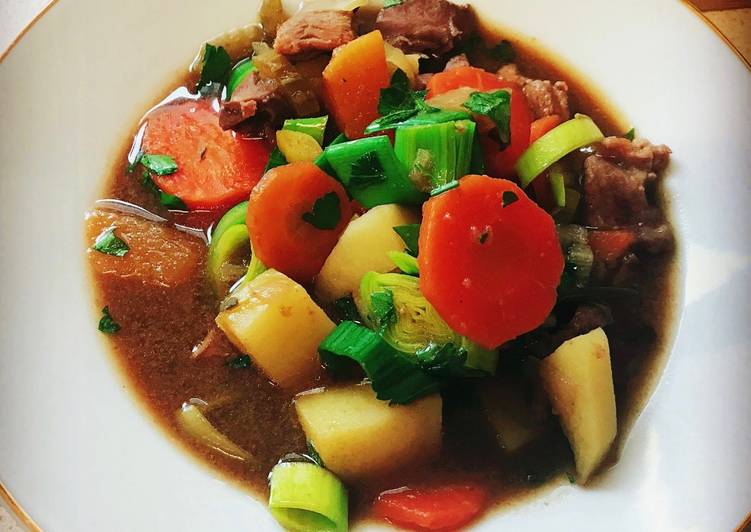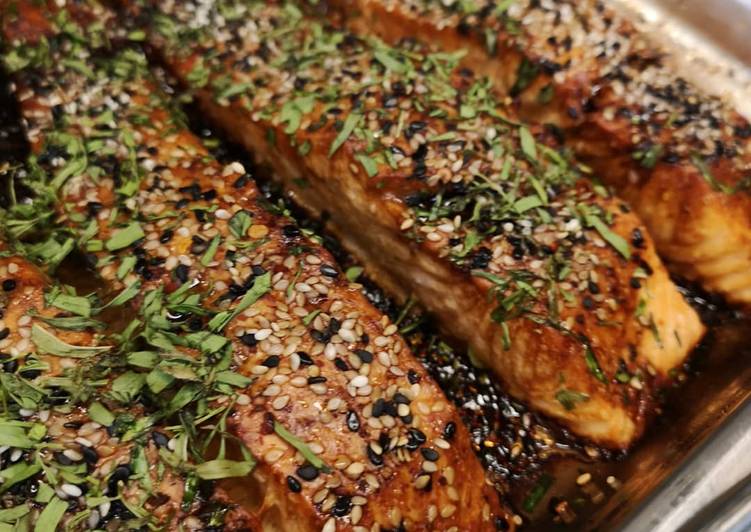
Hey everyone, it’s Louise, welcome to my recipe page. Today, I will show you a way to prepare a distinctive dish, traditional welsh lamb cawl. One of my favorites. This time, I am going to make it a little bit unique. This is gonna smell and look delicious.
Cawl: our traditional Welsh recipe The dish is also known as 'lobscows' in areas of North Wales. It is often better the day after preparing when all the flavours have developed. It is served in some areas in a wooden bowl and eaten with a wooden spoon with chunks of homemade bread and Welsh cheese. Peel and add the whole onion, along with the lamb.
Traditional Welsh Lamb Cawl is one of the most popular of recent trending meals on earth. It’s easy, it’s quick, it tastes yummy. It is appreciated by millions every day. They’re fine and they look wonderful. Traditional Welsh Lamb Cawl is something that I have loved my whole life.
To begin with this recipe, we must prepare a few components. You can have traditional welsh lamb cawl using 11 ingredients and 6 steps. Here is how you cook that.
The ingredients needed to make Traditional Welsh Lamb Cawl:
- Prepare 2 onions, sliced
- Get 2 celery sticks, sliced
- Get 2 carrots, peeled and sliced
- Make ready 1 parsnip, peeled and sliced
- Make ready 1 small swede, peeled and diced
- Prepare 3 potatoes, peeled and diced
- Get 2 leeks, thinly sliced, separate the white and green parts
- Take 750 g lamb neck fillets, trimmed and cut into chunks
- Take 2 oxo beed stock cubes
- Take 1 Knorr beef stock pot
- Make ready Fresh rosemary, thyme, and parsley
Traditional Welsh Lamb Cawl For those of you who may not know what Cawl is, it is a type of stew eaten all over Wales for centuries. At home, we alwa. more Katie Davies Wales, UK Traditional Welsh Lamb Cawl (Lamb & Vegetable Stew) is often seen as being the national dish of Wales. This recipe, created by food blogger Lavender and Lovage, is based on a traditional Welsh recipe for Cawl but uses lamb steaks in place of a lamb joint as was commonly used in times gone by. Cawl is a stew made from bacon, Welsh lamb or beef, cabbage, and leeks, although using cheaper cuts of meat is also traditional.
Instructions to make Traditional Welsh Lamb Cawl:
- Heat a large pan and add a drizzle of oil, add the onions, celery, parsnip, and swede. Cook the vegetables, stirring all of the time until golden brown. (this adds to the flavor). Then remove the veggies and set aside.
- If needed add a little more oil to the pan, then quickly brown the lamb chunks all over.
- Add the cooked vegetables back into the pan, add the rosemary and thyme and season, pour over enough boiling water to cover the ingredients, add the oxo cubes and the stock pot. Bring to the boil. Then cover and cook gently, the liquid should hardly bubble for 1½ hours, the lamb should be getting very tender.
- Add the potatoes and the white parts of the leeks and cook for a further 30 mins. Check the potatoes are tender and the seasoning and adjust if necessary.
- Finally add the green parts of the leeks, cook for a few minutes more to soften, scatter over the chopped parsley and serve with wholemeal bread and Caerphilly cheese.
- Top Tip: Cawl keeps very well in the fridge and also freezes well, and tastes better the following day.
This recipe, created by food blogger Lavender and Lovage, is based on a traditional Welsh recipe for Cawl but uses lamb steaks in place of a lamb joint as was commonly used in times gone by. Cawl is a stew made from bacon, Welsh lamb or beef, cabbage, and leeks, although using cheaper cuts of meat is also traditional. Welsh recipes for cawl vary from region to region, even season to season. Cawl can be eaten in one bowl, although often the broth will be served first followed by the meat and vegetables—hence the quote above. Cawl is a traditional chunky Welsh soup (it translates literally as 'soup'), which has numerous regional and seasonal variations.
So that is going to wrap it up with this exceptional food traditional welsh lamb cawl recipe. Thanks so much for reading. I’m sure you will make this at home. There’s gonna be interesting food in home recipes coming up. Don’t forget to bookmark this page on your browser, and share it to your family, colleague and friends. Thanks again for reading. Go on get cooking!

